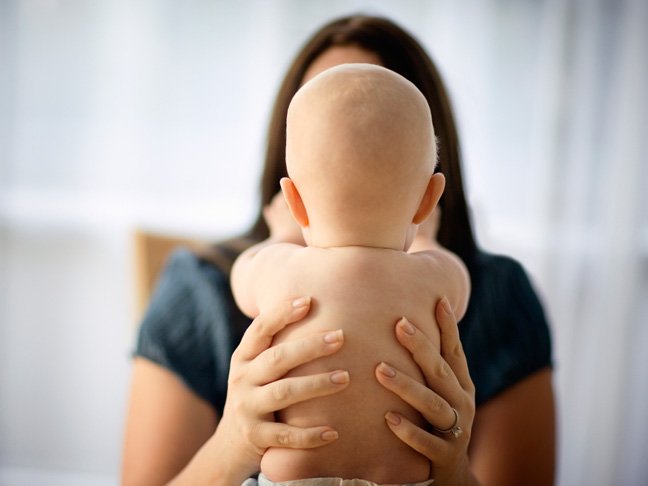A sacral dimple on a newborn baby could cause parents to become concerned about defects. If you have never heard of this dimple that appears on the lower backs of newborns, here are some answers to common questions about it.
What is a sacral dimple?
A sacral dimple, also known as a pilonidal dimple, appears as an indentation on a newborn’s lower back and is sometimes associated with a defect in the vertebrae or spinal cord. The good news is that in most cases, a pilonidal dimple is no cause for alarm and causes no developmental issues for a child.
What causes pilonidal dimple?
The cause of sacral dimple is not known. The condition is congenital, which means that a child is born with it. These dimples, located in the area at the bottom of the spinal cord known as the sacrum, form during development in the womb. Sometimes, there may be a tuft of hair, a skin tag or swelling in the area near the dimple, leading to concern about an underlying neural tube defect. Neural tube defects are birth defects of the brain, nerves, or spinal cord. Studies have shown that when a mother does not consume enough folic acid during pregnancy, that can be a risk factor for neural tube defects.
One type of neural tube defect, spina bifida, occurs when there is a malformation in the bones of the spine or when the spinal cord does not close completely, leaving a gap. However, there are no known risk factors for minor dimples. Many babies are born with these dimples.
How is sacral dimple treated?
Health care providers will evaluate the dimple to determine if there are any potential problems such as spinal abnormalities. When a child is born, the pediatrician will examine him or her for the presence of a dimple. If there is hair, a skin tag, or swelling in the area, a pediatrician may recommend that an ultrasound be done within the first few months after birth to determine if there are any developmental issues associated with the dimple. Should the test results confirm spinal cord or neural tube defects, further diagnostic testing can be done to determine the extent of the problem and what treatments may be needed.
Sacral dimples are usually not deep. When a dimple is deep, feces, perspiration, and dirt can collect in the dimple and cause infection. It is important to practice good hygiene when diapering and bathing your child. Keep the area as clean and dry as possible to prevent irritation or infection. If your baby has a dimple and experiences frequent infections in the area, ask your child’s health care provider what can be done to address the issue.
In most cases, a sacral dimple will not impact a child’s development. Children with these dimples lead healthy lives.
Photo: Getty








